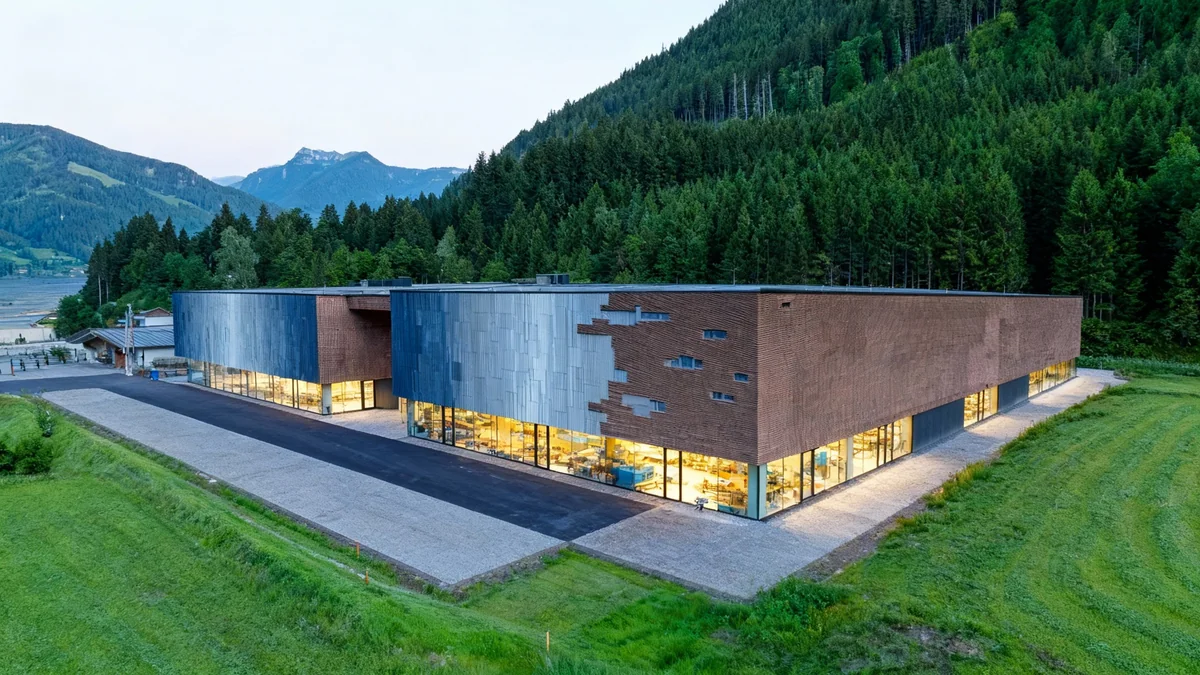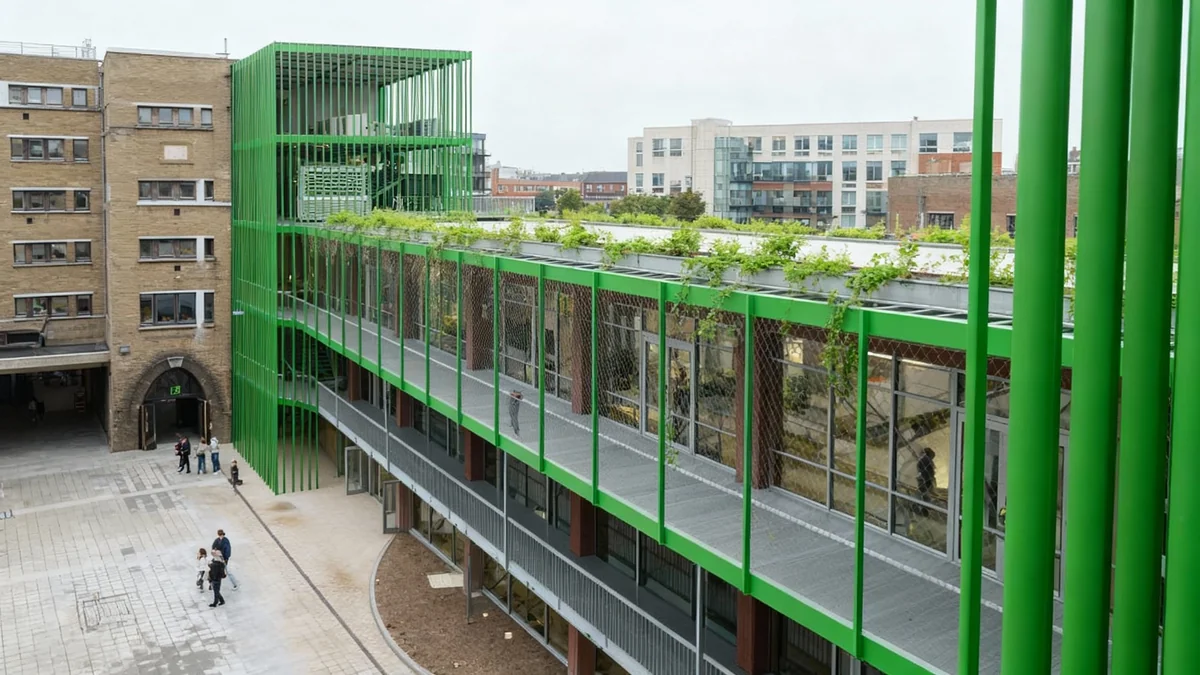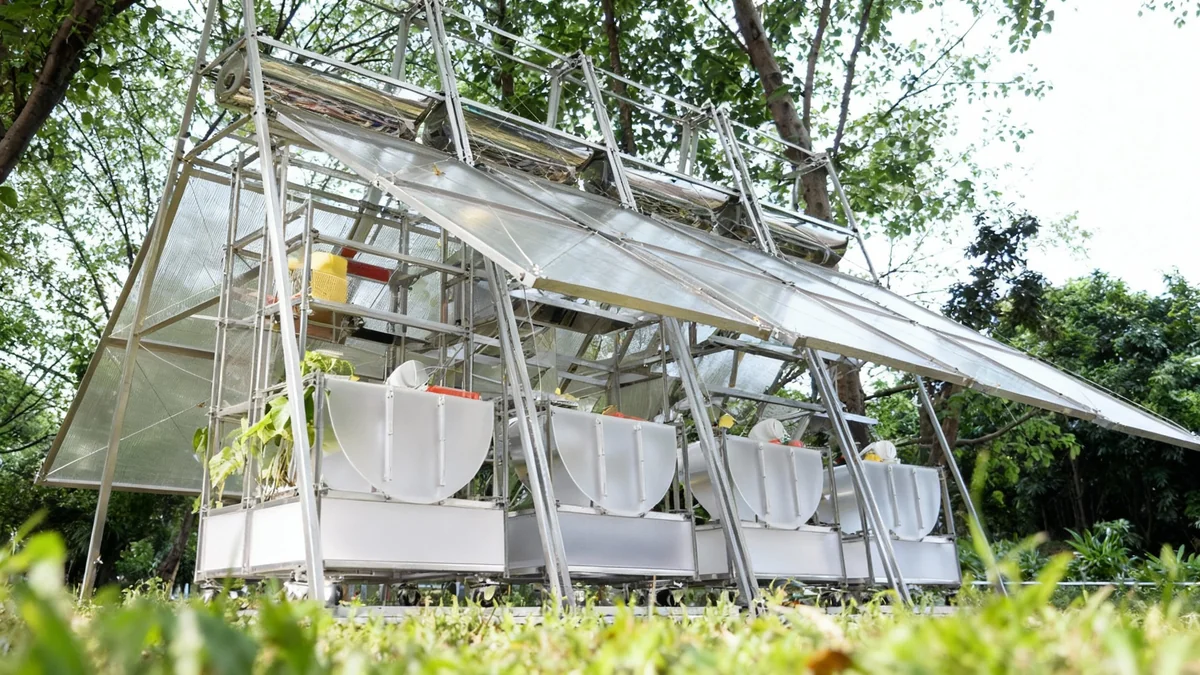A derelict factory complex in Poughkeepsie, New York, has been transformed into a vibrant community hub. The Scenic Hudson Northside Hub project, led by MASS Design Group, revitalized six former Standard Gage Factory buildings. This initiative provides new spaces for work, commerce, and community gatherings, marking a significant adaptive reuse effort in the Hudson Valley.
Key Takeaways
- Six former factory buildings in Poughkeepsie, New York, were renovated.
- The project created 15,000 square feet of mixed-use space.
- Over 85% of original brick structures and superstructures were preserved.
- The hub is certified as a brownfield remediation site and carbon-neutral.
- New parkland and green infrastructure were integrated into the site.
Adaptive Reuse for Sustainable Development
The transformation of the Standard Gage Factory highlights a commitment to sustainable development. Justin Brown, principal and project lead at MASS Design Group, emphasized the environmental benefits. He stated that adaptive reuse is the lowest carbon approach to development. This project aligns with the principle of 'Reduce, Reuse, Recycle' at both the building and urban scales.
The factory, which is 120 years old, had been vacant for nearly two decades. Scenic Hudson commissioned MASS Design Group to undertake the extensive renovation. The goal was to create a functional and environmentally responsible community center.
Project Facts
- Total Renovated Area: 15,000 square feet (1,393 square meters)
- Original Structure Preservation: Over 85% of brick envelopes, nearly all superstructures
- Site Area: Three acres of new parkland
- Certifications: National Register of Historic Places, brownfield remediation, New York State Research and Development Authority carbon-neutral building
Preserving History and Enhancing Functionality
The project successfully preserved a significant portion of the original structures. More than 85% of the brick building envelopes remained intact. Almost all of the existing superstructures, including mass timber and concrete elements, were also retained. This approach honored the factory's historical significance while preparing it for new uses.
The site is listed on the National Register of Historic Places. It also received certification as a brownfield remediation site. Furthermore, the New York State Research and Development Authority certified it as a carbon-neutral building. These certifications underscore the project's environmental and historical commitment.
"Scenic Hudson's Northside Hub represents MASS's commitment to adaptive re-use as the lowest carbon approach to development. It exemplifies the practice of 'Reduce, Reuse, Recycle,' at the building and urban scale."
Building A: A Multipurpose Core
Building A, constructed in 1920, is the largest structure on the site. It now features three levels of workspace. This building also includes a gallery and community meeting rooms. A cafe opens onto an exterior lawn, designed for various events. This central building serves as a primary hub for activity within the complex.
The design team carefully planned each space to maximize utility and aesthetic appeal. Natural light and open layouts define the interior. The connection to the outdoor lawn promotes community interaction and flexibility for different events.
Modern Amenities in Historic Settings
Building B, the oldest structure from 1910, was built with mass timber and masonry. It now houses a double-height auditorium. This space includes retractable, tiered seating and modern projection displays. A reception area complements the auditorium. The roof of Building B was reinforced to create a green roof and terrace. This area offers views of a nearby creek, providing a peaceful outdoor space.
Brownfield Remediation
Brownfield sites are properties that may have hazardous substances, pollutants, or contaminants. Redeveloping these sites, often former industrial or commercial properties, requires environmental cleanup. This process helps to safely reuse land and revitalize communities, preventing further urban sprawl and promoting sustainable development practices.
Future Programming for Buildings C and D
Buildings C and D, both two-story structures, were renovated with future programming in mind. These spaces are adaptable for various tenants. Potential uses include a restaurant, workshop, office space, or retail outlets. This flexibility allows the hub to evolve with community needs.
The project also involved renovating a 5,000-square-foot (465-square-meter) open-air pavilion. An adjacent storage building was also updated. These additional spaces further expand the hub's capabilities for diverse activities and services.
A prominent 50-foot-tall brick exhaust chimney stands over the buildings. The letters 'SGCO' are painted on its bricks. This stands for Standard Gage Company, serving as a visual reminder of the site's industrial past. This historical detail connects the new hub to its origins.
Environmental Focus and Carbon Neutrality
The site's design prioritized the natural environment. Onsite stormwater management systems were installed. Brownfield remediation efforts cleaned up the land. Native plantings were introduced to support local biodiversity. These strategies contribute to a healthier ecosystem.
The buildings themselves were adapted to achieve carbon neutrality. Rooftop and parking shade photovoltaic arrays generate solar power. A solar-powered fresh air system enhances indoor air quality. Climate-responsive systems and high-performance envelopes further reduce energy consumption. These features make the hub an example of sustainable building practices.
"By leveraging the embodied carbon costs that have already been paid by past generations, we can begin to think about buildings as carbon sinks, like plants with generative environmental benefits, rather than as carbon emitters whose harm we must mitigate."
Justin Brown highlighted the concept of buildings as 'carbon sinks.' He suggests that by reusing existing structures, society can minimize new carbon emissions. This approach transforms buildings into assets with positive environmental impacts, moving away from the traditional view of buildings as carbon emitters.
MASS Design Group's Global Impact
MASS Design Group is a non-profit organization. It has offices in Boston, Massachusetts, and Kigali, Rwanda. The firm works on projects across many sectors and locations worldwide. Their work often focuses on designs that respond to local contexts and environmental challenges.
Past projects include a university building in Rwanda constructed with rammed earth walls. Another notable project was a glass memorial for victims of gun violence. This memorial was displayed at the Chicago Architecture Biennial in 2019. These diverse projects demonstrate the firm's commitment to impactful and sustainable design solutions.
Project Credits
- Design Architect: MASS Design Group
- MEP/FP: Vanderweil Engineering
- Sustainability: Transsolar
- Civil Engineering: LaBella Associates
- Landscape Architect: Stoss Landscape Urbanism
The Scenic Hudson Northside Hub project stands as a model for urban revitalization. It combines historical preservation with modern sustainability. The initiative provides valuable community resources and demonstrates a forward-thinking approach to architectural design and environmental responsibility.




